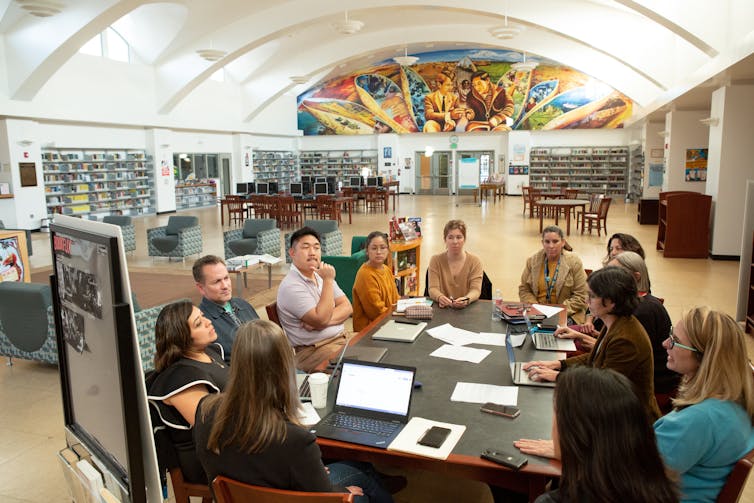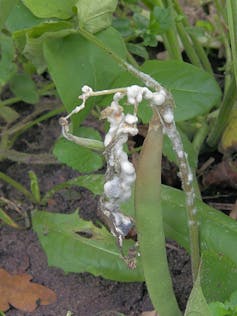Source: The Conversation – Canada – By Magali Nehemy, Assistant Professor, Department of Earth & Environmental Science, University of British Columbia
The Amazon is the world’s largest tropical forest, home to unmatched biodiversity and one of the planet’s longest rivers. Besides the Amazon River, the Amazon rainforest also features “flying rivers:” invisible streams of vapour that travel through the atmosphere, fuelling rainfall both within the forest and far beyond its boundaries.
The forests play a central role in this system. Much of the moisture that rises into the atmosphere comes from transpiration. Trees pull water from the soil through their roots, transport it to the leaves and release it as vapour. That vapour becomes rainfall — sometimes locally, sometimes hundreds of kilometres away.
In the dry season when rain is scarce, up to 70 per cent of rainfall in the Amazon comes from this moisture-recycling generated by the forest itself. This raises a key question: where do the trees find the water to keep the cycle going during the driest months?
Our study in the Tapajós National Forest
In our recent study, colleagues and I set out to answer this question. In 2021 during the peak of the dry-season, we conducted fieldwork in the Tapajós National Forest, in Pará state, Brazil on the traditional territory of the Mundurukú people.
We worked across two contrasting sites: a hilltop forest with a deep water table (about 40 metres), and a valley forest near a stream where groundwater is much shallower.
The results were surprising. Most water used for transpiration in the dry season did not come from deep reserves, but from shallow soil. In a year without extreme drought or floods, 69 per cent of transpiration on the hill and 46 per cent in the valley came from the top 50 centimetres of soil.
Our research also found that water stored in the shallow soil had fallen on land recently, specifically during the dry season. In other words, the forest rapidly recycles the rain: it falls, infiltrates shallow soil, is absorbed by roots and is released back into the atmosphere, fuelling new rainfall — right when the forest needs water most.
The role of tree diversity
Not all trees contribute to this cycle equally. The Amazon’s diversity means species use different strategies to access water stored in the soil. Our study showed that a key factor is “embolism resistance,” a measure of how well a tree can keep water moving through its tissues during drought.
Trees that are more resistant in preventing air blockages in their water transport system are able to keep drawing water from soil and releasing moisture into the atmosphere, even in the driest months.
Drawing water from dry soil is like a tug-of-war, where water is the rope: the soil holds onto the water while the roots try to pull it free. The drier the soil, the stronger the pull required.
Species with high embolism resistance can keep transpiring as soils dry, therefore they can rely on recently fallen rain in shallow soil. Less resistant species are more drought-sensitive and will rely more on deeper roots to reach stable reserves, or other strategies.
Our study shows that the higher the resistance to embolism, the higher the proportion of shallow water a tree uses, and therefore the more recent rainfall from the dry season is returned to the atmosphere. This is the first evidence that rapid recycling of dry-season rainfall through transpiration is strongly supported by embolism resistance.
The challenge ahead
Rainforests are facing significant threats of human encroachment and deforestation. Recent policy changes in Brazil risk accelerating deforestation in sensitive areas such as the Amazon, the Cerrado savannah and Atlantic Forest — all vital for the water cycle.
A disrupted water cycle with less rain threatens biodiversity and natural habitats, as well as water security food supplies.
Local and Indigenous communities are the most directly affected, but the impacts extend far beyond. The flying rivers also carry Amazonian moisture to southern and central parts of Brazil, supporting agriculture in major grain-producing regions. Less forest means less rain, threatening crops, food security and the economy.
This delicate balance is threatened by deforestation. When forests are cut down, fewer trees release moisture into the air through transpiration, reducing the formation of local and nearby rainfall during the dry season.
Forest loss weakens the very system that sustains rainfall — the recycling of water through transpiration. Our study shows that embolism-resistant trees play a central role by quickly returning dry-season rainfall to the atmosphere, where it fuels new rainfall.
The message is clear: without the forest, there is no rain, and without rain, no forest. The quick recycling of dry-season rain keeps the Amazon alive through its driest months. It also plays a crucial role in triggering the return of the wet season. If the forest loses its ability to recycle this water, the entire hydrological cycle risks collapse.
Brazil will host the 2025 United Nations Climate Change Conference, COP30, in November. As policymakers gather, preserving rainforests like the Amazon must be among the issues at the top of the agenda.
The world’s forests are complex and biodiverse places with delicate natural systems that sustain them. The Amazon truly functions as a rain-making engine that helps sustain life, inside and beyond the forest.
![]()
Magali Nehemy does not work for, consult, own shares in or receive funding from any company or organisation that would benefit from this article, and has disclosed no relevant affiliations beyond their academic appointment.
– ref. New study shows how Amazon trees use recent rainfall in the dry season and support the production of their own rain – https://theconversation.com/new-study-shows-how-amazon-trees-use-recent-rainfall-in-the-dry-season-and-support-the-production-of-their-own-rain-263525








